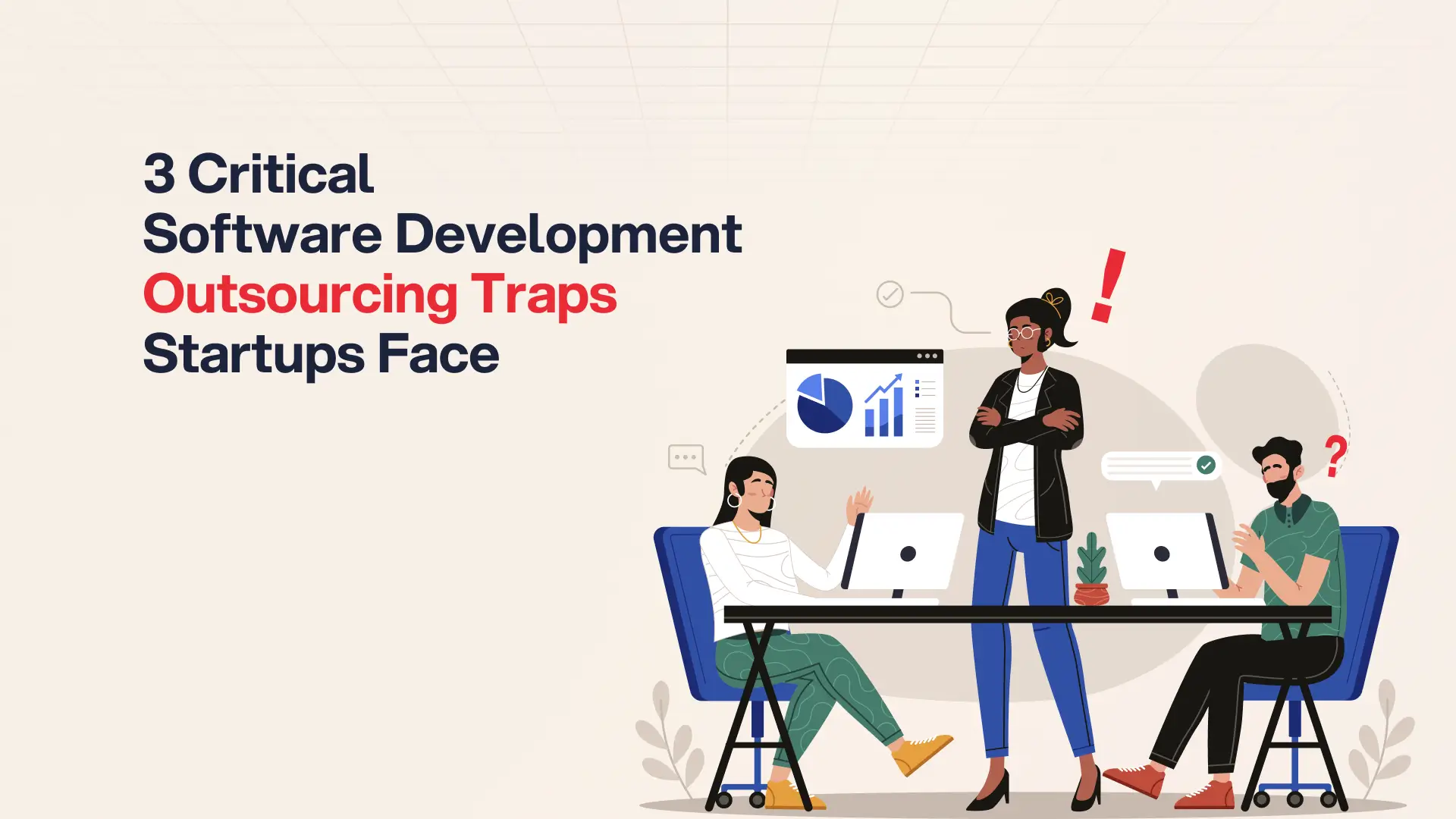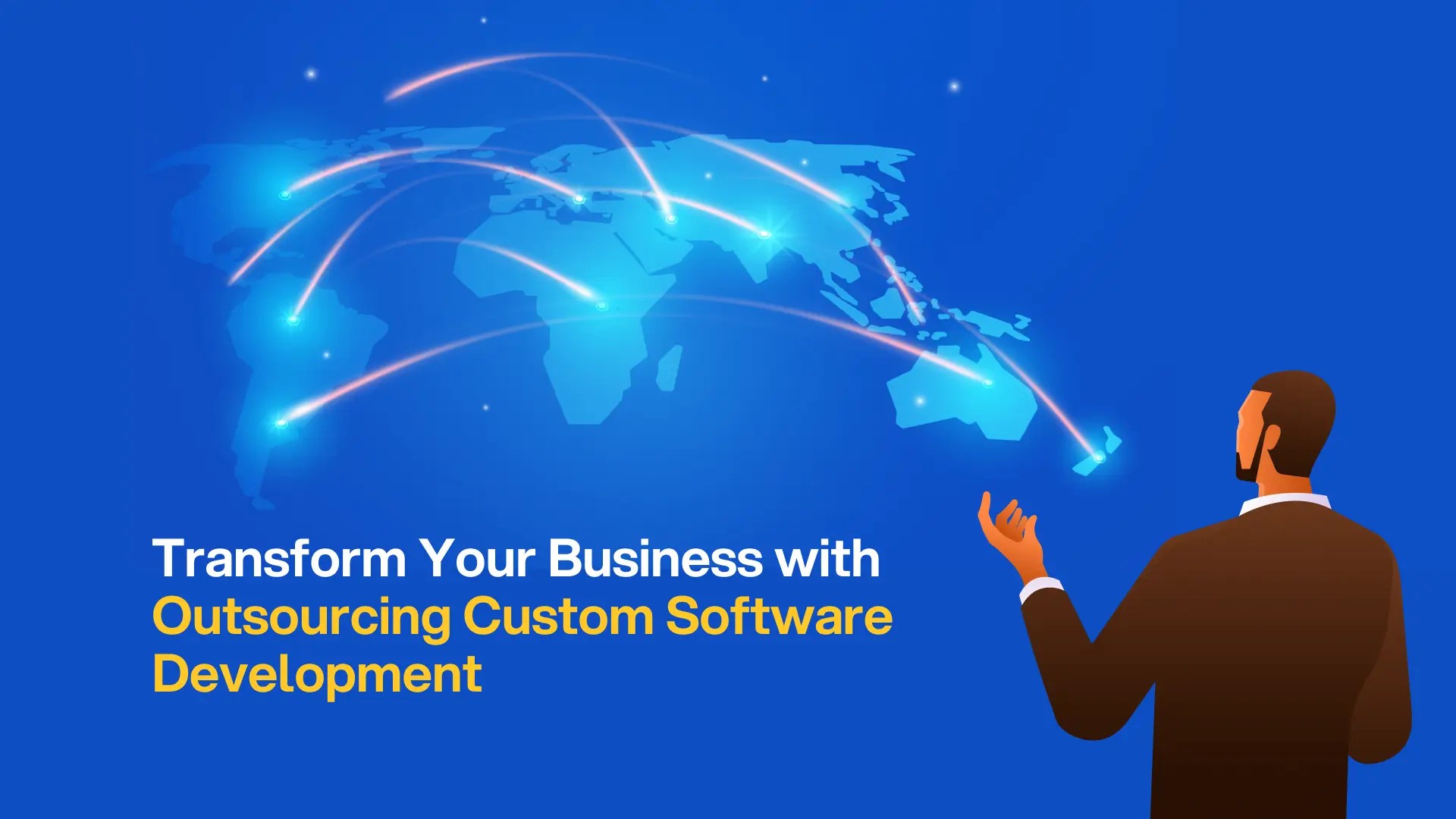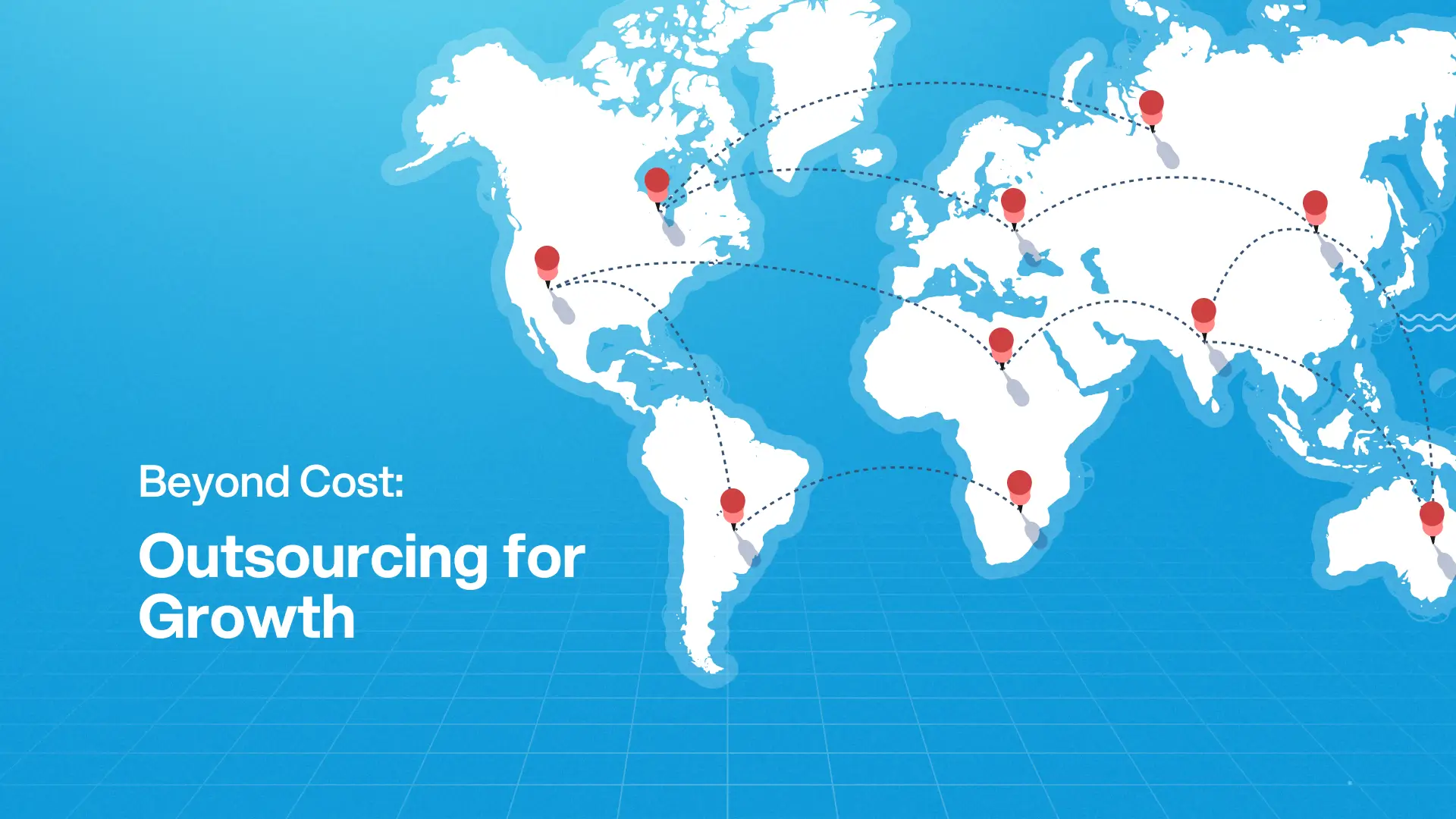Post Activity
 276
276
Table of Content
Share This Post
Table of Content
Scaling in EdTech isn’t just about innovation. It’s about execution. As AI, AR/VR, and data analytics become table stakes, strategic outsourcing is now the fastest route to scale in the $10 trillion global EdTech market.
Emerging technologies reshaping how learning is delivered and consumed. Artificial Intelligence (AI), Augmented Reality (AR), Virtual Reality (VR), and data analytics are no longer futuristic concepts. They are integral to modern education. According to HolonIQ, advanced technologies like AR/VR and AI are becoming increasingly embedded into core education delivery and learning processes. Building domain-savvy teams that understand both education and engineering is the real challenge. That’s where strategic outsourcing comes in.
Outsourcing as a Strategic Lever in EdTech Development
Let’s assume you have an EdTech product, and it is gaining traction. Users are increasing, and investors are asking about new features. The product backlog is expanding. You want to add smarter adaptive learning algorithms or redesign the mobile experience. However, engineering hours are disappearing faster than you can hire. Finding good QA is even more challenging under pressure.
Creating and maintaining advanced solutions in-house can use up resources. It can also shift focus from main strengths and raise costs. How can your organization lead in EdTech without sacrificing quality or budget?
In-house development gives you control but often struggles with scalability. Finding specialized talent and managing infrastructure takes time and money. Also, keeping up with innovation requires constant effort. Technology changes fast. Today’s solutions can become outdated in a short time.
Outsourcing is a smart choice. It gives access to global talent, reduces costs, and speeds up development. Strategic outsourcing in EdTech helps you to add niche expertise to your core team. It boosts delivery speed without overstaffing.
Thinking of Outsourcing?
Access a wide range of outsourcing companies and find your best fit.
Identifying Optimal Outsourcing Locations for EdTech Solutions
Outsourcing in EdTech goes beyond coding. Picking the right outsourcing location is critical. Factors like technical skills, cultural fit, time zone, and costs are essential for project success. There are a few outsourcing service locations that have developed domestic and international EdTech platforms and gained strong expertise over time.
India: The Long-Standing Outsourcing Powerhouse
India (GSLI rank 1) leads in outsourcing due to its skilled and affordable workforce. The country focuses on STEM education and teaches young students about crypto, AI, and other modern tech as a part of the National Education Policy 2020.
The Indian EdTech market has experienced strong growth and investment. The market size hit $2.8 billion in 2024 and IMARC Group predicts it will grow to $33.2 billion by 2033. This shows a compound annual growth rate (CAGR) of 28.7% from 2025 to 2033.
The EdTech market growth has built skills in areas like LMS development, mobile learning, and AI tools. Additionally, government initiatives are pushing for digital education. As of 2025, India is home to over 17,000 EdTech companies, making it the second-largest EdTech hub globally, just behind the United States.
Top EdTech companies include BYJU’S, Vedantu, LEAD School, Physics Wallah, and Ednovate. These trends and achievements position India’s EdTech industry as a global leader in shaping the future of education.
- Talent pool: Over 5.8 million IT professionals
- Rates: $18–$40/hour
- Strengths: Deep experience in large-scale EdTech platforms, strong QA ecosystems, and familiarity with global compliance standards like SCORM, GDPR, and WCAG.
- Remarks: Time zone differences can require careful sprint planning.
Vietnam: Southeast Asia’s Emerging Outsourcing Hub
Vietnam (GSLI rank 7) remains a strong Asian outsourcing destination. The presence of major tech companies show that the country is a global digital hub. This motivates its workforce in enhancing their skills and competence.
Parallelly, the government supports the digital transformation of its education sector. The authorities want everyone to use e-learning materials and digital teaching methods. This encourages the local IT professionals and developers to improve their skills in EdTech.
Vietnam’s “National Digital Transformation Program” aims to build a digital economy. EdTech is a key part of this plan. Startups and IT firms are creating LMS platforms, mobile learning apps, and AI-driven educational tools. Meanwhile, universities in Vietnam are partnering with global organizations to train students in cloud computing, big data, and AI.
- Talent pool: Over 400,000 IT professionals
- Rates: $15–$30/hour
- Strengths: Agile development culture, cost-efficiency, and growing specialization in EdTech UX/UI and mobile-first platforms.
- Remarks: Smaller talent pool than India; developers may need more exposure to global compliance frameworks like SCORM or WCAG.
Ready to Build Your Team?
Let’s create together, innovate together, and achieve excellence together. Your vision, our team – the perfect match awaits.
Bangladesh: The Quiet Climber in EdTech
A PwC study shows that Bangladesh could be the next big outsourcing hub. It has a growing working-age population and government efforts to attract investments.
Bangladesh’s EdTech sector has grown quickly in the last ten years. The most prominent players are 10 Minute School (10MS), Shikho, Interactive Cares, Programming Hero, Bohubrihi, Shikhbe Shobai, and Ostad. Local software engineers built most of these EdTech platforms in Bangladesh.
- Talent Pool: Over 1 million IT professionals
- Rates: $18–$30/hour
- Strengths: Fast-growing pool of developers with growing specialization in EdTech. Strong QA and automation testing focus.
- Remarks: Increasingly seen as a smart alternative to India for mid-sized projects due to competitive pricing and improved infrastructure.
Poland: Eastern Europe’s High-Quality Outsourcing Hub
Poland is a key IT outsourcing hub in Eastern Europe. The country has high English proficiency and a strong focus on STEM education. The IT services sector is estimated to exceed $10 billion by 2025.
Government programs like “Poland Business Harbour” and EU funds for digital transformation enhance its attractiveness. Companies in Poland are taking on advanced outsourcing projects in EdTech, alongside supporting its local EdTech companies.
Poland has 412 EdTech startups. Notable ones include Brainly, LiveKid, WSiP, Nuadu, and Fiszkoteka.
- Talent Pool: Over 400,000 IT professionals
- Rates: $40–$55/hour
- Strengths: High code quality, excellent English proficiency, and close timezone alignment with the EU. Known for strong front-end architecture and DevOps practices.
- Remarks: If your EdTech platform serves European learners or institutions, timezone and cultural alignment are a plus.
Argentina: A Rising Star in Latin America
Argentina is a great nearshoring choice for North American companies. It has a well-educated workforce with strong technical and creative skills. This makes it an emerging hub for EdTech innovation.
Government initiatives, such as “Argentina Innovadora 2020” and the “National Plan for Science, Technology, and Innovation 2030,” support digital transformation. Tax incentives for knowledge-based activities and programs that promote tech entrepreneurship create a positive environment for the EdTech industry.
Platforms like Digital House, Henry, and Ticmas are proof of local skills in developing online learning, adaptive education, and gamified tools. Argentine universities work with international institutions on AI and learning analytics research. This helps develop talent with strong knowledge of educational technology.
Additionally, Argentina has solid public and private technical institutions. Many software engineers have backgrounds in mathematics and computer science. The country’s vibrant startup scene and involvement in open-source projects align well with quick EdTech development cycles.
- Talent Pool: Over 115,000 software developers
- Rates: $25–$45/hour
- Strengths: Strong design thinking culture, deep academic ties, and increasing specialization in gamified learning, adaptive systems, and AI-driven EdTech.
- Remarks: Macroeconomic instability may cause occasional hiring or contract challenges, but this is often offset by high talent quality and favorable exchange rates.
Summary of the Top Five EdTech Outsourcing Countries
Conclusion
In EdTech, innovation alone doesn’t guarantee success. Scaling requires rapid execution. This is where outsourcing becomes a strategic advantage. Building in-house teams offers control but often limits scalability. Outsourcing accelerates delivery, taps global talent, and contains costs.
Strategic outsourcing isn’t a fallback. It’s a forward-looking move that unlocks specialized talent, expands delivery capacity, and keeps your organization agile in a fast-moving digital education space. The right outsourcing partner can help you scale from product-market fit to platform dominance.
Find Your Perfect Software Outsourcing Partner
Unlock a world of trusted software outsourcing companies and elevate your business operations seamlessly.






